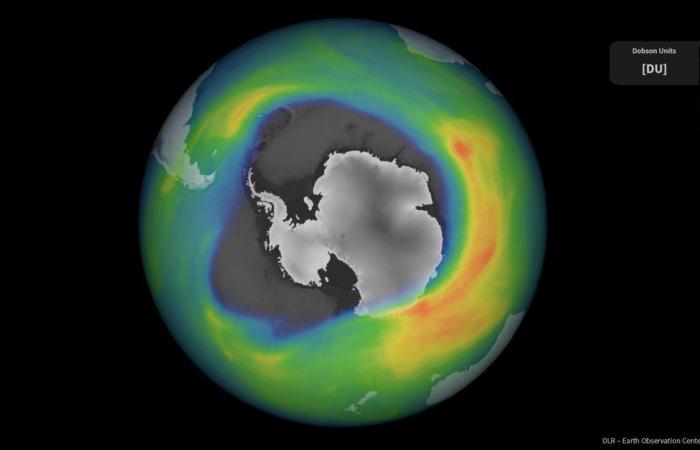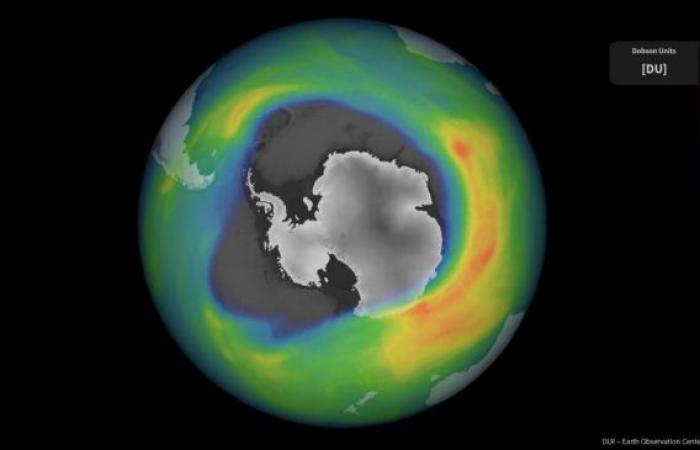The scale on the right shows Dobson units, a measure of the amount of ozone in the atmosphere. The open area over most of Antarctica indicates the size of the 2020 ozone hole.
DLR Earth Observation Center
The ozone layer is necessary for life on earth to survive. It acts like an atmospheric sun protection, which is why scientists closely observe an ozone hole that occurs seasonally over Antarctica.
This year’s hole “is one of the largest and deepest in recent years,” the European Space Agency (ESA) said in a statement this week. The ozone layer protects the earth’s inhabitants from ultraviolet solar radiation.
From the laboratory to your inbox. Get the latest scientific stories from CNET every week.
The size of the hole fluctuates and reaches its maximum size in September or October each year. The task of the Copernicus Sentinel-5P satellite is to observe the ozone hole. The German Aerospace Center compiled the data and determined that the hole has peaked for 2020 and that ozone levels will recover by the end of the year.
The 2020 hole reached a size of 25 million square kilometers in early October. ESA said this size was comparable to the holes that formed in 2015 and 2018.
A picture released with the statement shows the hole that spans most of Antarctica, and a video allows you to follow the changes from late September to mid-October.
The hole last year was remarkably smallbut that didn’t mean it was healed. “The variability in the size of the ozone hole is largely determined by the strength of a strong band of wind that flows around the Antarctic area,” said ESA.
In 2019 NASA scientists Paul Newman paid attention to it that the small hole was no sign of a speedy recovery.
Scientists raised the alarm at the South Pole ozone hole in the 1980s and made efforts around the world to reduce the use of substances such as certain aerosol products that damage the ozone layer. In 2018, NASA shared the first direct evidence of ozone hole reclamation due to a ban on harmful chemicals.
Confident that the hole will heal at some point, researchers are currently looking for a normalization of the ozone layer somewhere around 2050.
These were the details of the news 2020 Antarctic ozone hole “one of the largest and deepest in... for this day. We hope that we have succeeded by giving you the full details and information. To follow all our news, you can subscribe to the alerts system or to one of our different systems to provide you with all that is new.
It is also worth noting that the original news has been published and is available at de24.news and the editorial team at AlKhaleej Today has confirmed it and it has been modified, and it may have been completely transferred or quoted from it and you can read and follow this news from its main source.


